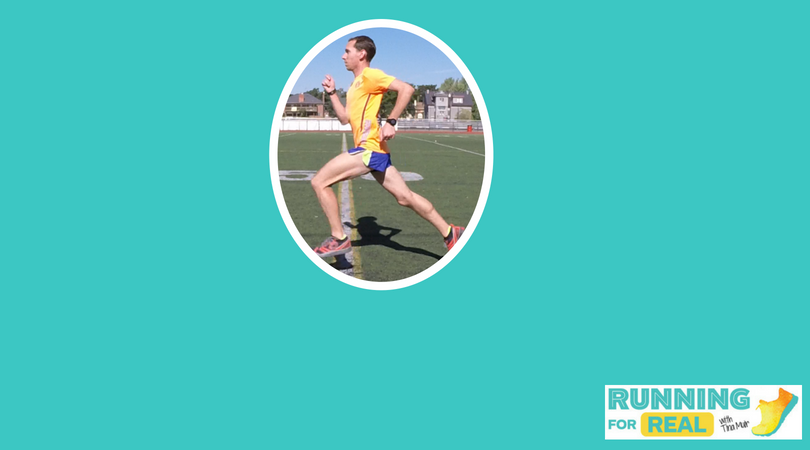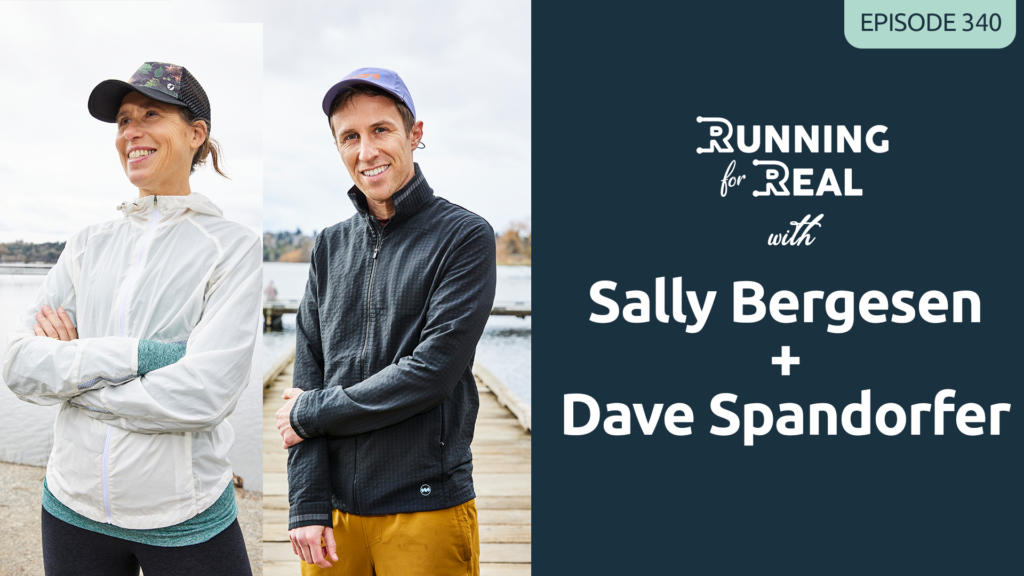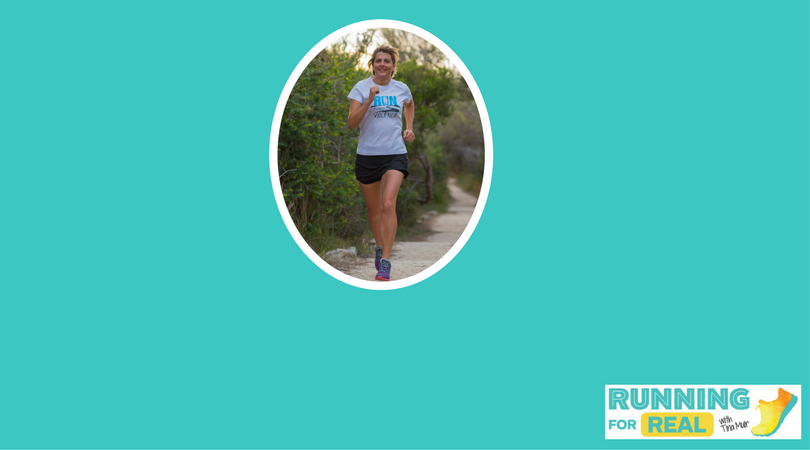Many listeners will recognize themselves in Brodie Sharpe’s analyses of injured runners. As a runner himself, he relates to the ways that runners’ personalities can contribute to injury. As a physiotherapist, he uses that understanding to inform his holistic approach to helping them recover. He’s the host of the Run Smarter podcast, founder and CEO of the Run Smarter series, and author of Run Smarter: Evidence-Based Guidance to Help You Survive & Thrive as a Runner.
Listen to the Running for Real podcast here:
Apple (iTunes) Podcast | Sticher | Castbox | Overcast | Spotify | Google Play | iHeartradio |
Brodie was “doing a deep dive into the research around what pops up, why people get injured, what reduces risk of injury, how can you increase your running performance safely,” and realized that “There’s a lot of information that runners need to know; there’s a lot of misconceptions and myths out there about reducing risk of injury.” He started the Run Smarter podcast in 2019 to be able to educate more people than he could reach through his private practice.
He likes to address the misconceptions around running that can sometimes contribute to injury. For example, “People think they get injured because they don’t stretch enough. Researchers show that’s not the case, but people think, ‘Okay, I’m getting injured because I’m not that flexible and I don’t stretch enough.’ That’s what they believe, but they’re not going to stretch because they don’t like stretching. They’re the type of runner that won’t ever do it, but they’re convinced that they’re getting injured because they don’t stretch enough. But what they fail to realize is, something else in their training they’re not focusing on might be causing their injury. They might be not getting enough sleep, or overtraining, or increasing their intensity too much, but they’re not focusing on those changes because they think it’s just because they don’t stretch.”
“They want that simple fix,” he continues. “And sometimes that’s not the case. Most of the time, it’s not the case.”
Brodie has found that there’s a link between personality traits and risk of injury. Being a perfectionist is one such trait, but more specifically, being a certain kind of perfectionist. He cites a study that separated perfectionism into two types: strivings and concerns. “Perfectionistic strivings would be like, ‘I strive to be the best’, all that sort of stuff. Perfectionistic concerns would be like, ‘I am worried if I get injured, I’ll let down my teammate’ or ‘I’m worried about what people think of me if I can’t perform,’ all those sorts of things. Those are perfectionistic concerns, and they showed that there is a huge correlation with perfectionistic concerns and your likelihood of getting injured.”
Many runners are “Type A” personalities. As Brodie describes them, “Very driven, self- motivated, sometimes data driven. We like analytics, we like to look at progress, we like goals, we like all those sorts of things. Fantastic traits to have if you have a marathon and it’s winter and you have to get up in the morning; you have to go for a run. You’re self-motivated and driven to do that.” However, those same traits can be of disservice to you. You can become what he calls the “Self-Sabotaging Runner.”
He describes the cycle that the Self-Sabotaging Runner goes through. “You’ve done too much, you’ve run through pain, you’ve ignored it, you probably shouldn’t have, and now you have to take some time off running. You’re kicking yourself because you’re like, ‘I shouldn’t have done that.’ And you’re letting pain sort of dictate that and take time off. But then as soon as you’re three days pain free, you’re trying to run 10K and then you exacerbate those symptoms again, just because you’re like, ‘Finally, I’m back; let’s go. I’ve wasted so much time, I need to catch up on my training plan; let’s dive in.’ You exacerbate symptoms again, and again, you kick yourself. You’re like, ‘Damn it, I knew I’d done too much. Obviously, it was too much. I wasn’t ready for that.’”
Brodie will lay out a recovery plan for his Self-Sabotaging clients, but, he says, “As soon as they have one or two really good weeks, they throw that plan out the window; they sign up for a marathon that’s in three months. And this is what got them into that situation in the first place. It’s a bit too much drive; it’s a bit too much competitiveness and motivation. It’s just that little bit too much excitement for the sport which we love. We want people to love the sport, but when it’s to your detriment, especially if it’s a constant pattern, a behavioral pattern based on your personality, we need to be very, very careful.”
We also need to be careful about recovery. People often jump to the conclusion that overtraining is the cause of an injury, which it certainly can be, but under recovery can also be the culprit. “You can overtrain and the likelihood of an injury can increase, but you can also keep your training load consistent and still get an overload injury if you start under recovering. That will cover sleep, nutrition, hydration, stress, those sort of areas of your life outside of training volume. People say, ‘I’m increasing by 10% a week, I’m conservative, I don’t do a lot of speed work; how did I end up with this injury?’ Well, maybe you didn’t sleep too well over the last couple of weeks, maybe you’ve been stressed, maybe you haven’t been eating the right stuff. And what I like to highlight a lot of times on my podcast is you don’t get stronger during your hard workouts, you get stronger after your hard workouts.”
Unfortunately, runners can strive to do everything “right” and still get injured. Injuries are “part of the running journey,” Brodie says,”but runners have the expectation of ‘I just want to run and not get injured. That’s my standard. And whenever I do get injured, then I am really down on myself. I’ve done something wrong.’ That’s an unrealistic goal. If you want to push your capabilities, then the risk of injury isn’t going to be zero. Even if you’re just maintaining your fitness, the risk isn’t gonna be zero. There are a lot of things you can do to reduce your risk of injury, but if an injury does happen, it’s a part of the game.”
Brodie’s definition of injury prevention is “Knowing what to do in those really early moments, knowing exactly how to be proactive to negotiate that injury without losing fitness. Injuries are going to pop up, symptoms are going to pop up, because injuries are so multifactorial that we can’t control everything, but learn from it. Know exactly what to do, know how to interpret symptoms, return back to running symptom-free without losing fitness. That’s my goal. That’s what I think people should focus on and it’s reassuring in a way. So, if symptoms do pop up, that’s a part of the journey.”
resources:
Run Smarter podcast – be sure to check out the first ten episodes, which cover ten universal principles to reduce or overcome injury.
Run Smarter: Evidence-based Guidance and Expert Opinions to Help You Survive & Thrive as a Runner
Thank you to Oladance, Athletic Greens, and Allbirds for sponsoring this episode.

Oladance Wearable Stereos deliver high-quality sound without ever going in your ear. They have a secure fit so they’re perfect for running, but so comfortable that you can wear them for hours. Since they don’t go in your ear, you can still hear outside sounds and remain aware of your surroundings. The audio quality is outstanding; Oladance is truly a wearable stereo, with 360° sound. It also has a super long battery life – up to 16 hours!
Oladance is for people who love to move, to be active, and to listen to music, podcasts or books with superior sound. You’ll love Oladance for yourself, and they make a perfect gift. You can go here and use code TINA to save 20% on your order!

AG1 is an easy way to get 75 vitamins, minerals, and whole food source ingredients. It promotes gut health with prebiotics, probiotics, and naturally occurring enzymes; supports your immune system with Vitamin C, zinc, healing mushrooms, and more; provides magnesium to boost energy; and it’s packed with superfoods, adaptogens, and antioxidants to help recovery. It’s simple to make and it tastes good!
This is the time of year when our immune systems can use a boost, not only because it’s cold and flu season, but because with less sunlight, our vitamin D levels drop. Go here to get five free travel packs of AG1, and they’ll also send you a free one year’s supply of vitamin D3+K2 with your subscription, to help keep you healthy year-round.

Allbirds’ performance running shoe, the Tree Flyer, is lightweight, super springy, and wildly comfortable, and they’re Tina’s go-to running shoes. They’re her workout shoes, and she’s run three marathons and an ultra in them.
The Tree Flyer isn’t Allbirds’ only great shoe. The Tree Dasher is not only a running shoe, it’s perfect for daily wear. For water repellent shoes, look no further than the Mizzle series. Allbirds has also introduced plant leather shoes, the Plant Pacers. You can see their complete collection here.
Thanks for listening!
We know there are so many podcasts you could listen to, and we are honored you have chosen Running For Real. If you appreciate the work that we do, here are a few things you can do to support us:
- Take a screenshot of the episode, and share it with your friends, family, and community on social media, especially if you feel that the topic will resonate with them. Be sure to tag us on Twitter, Facebook, Instagram
- Leave an honest review on iTunes or your favorite podcast player.
- Your ratings and reviews will really help us grow and reach new people.
Not sure how to leave a review or subscribe? You can find out here.
“Thank you” to Brodie! We look forward to hearing your thoughts on the show.



